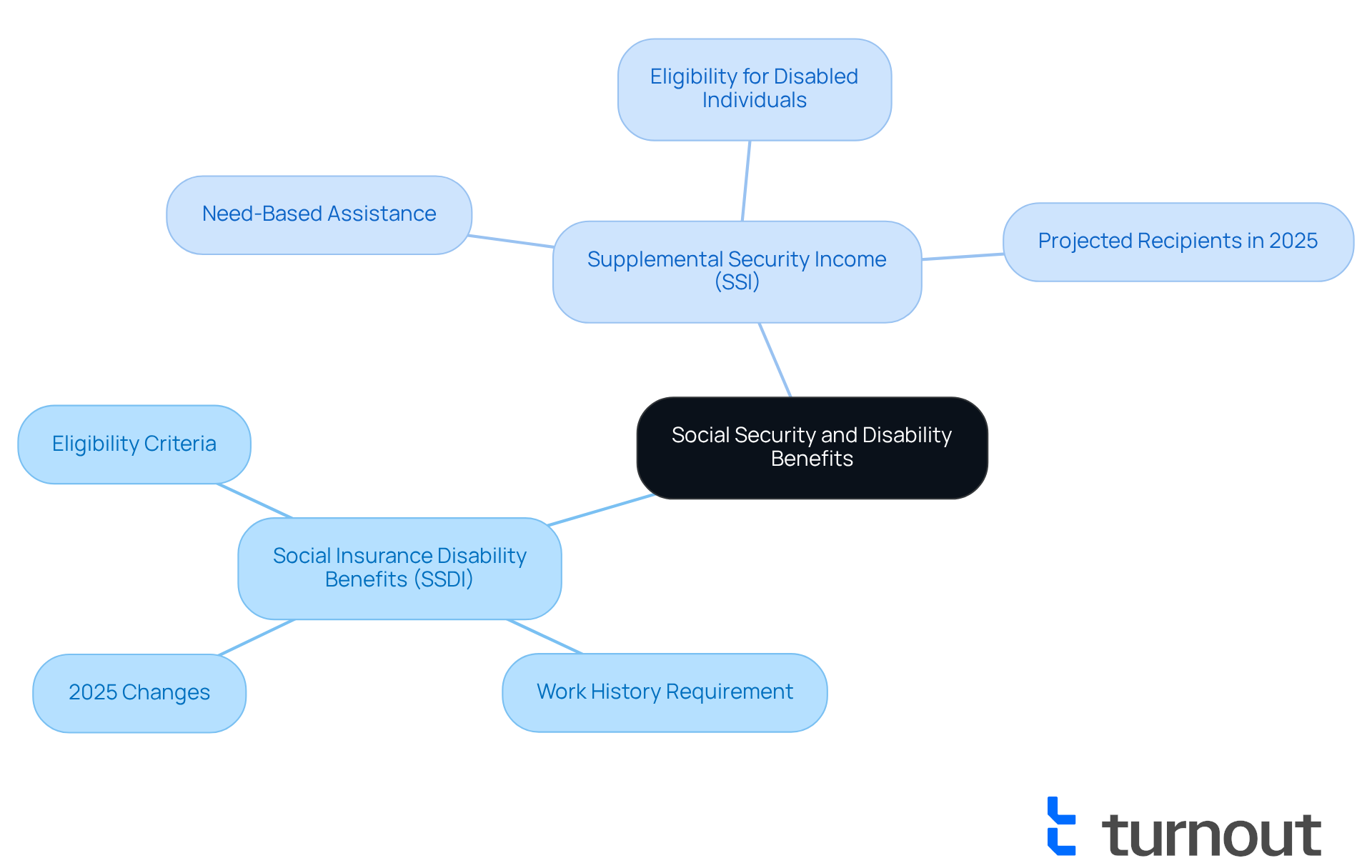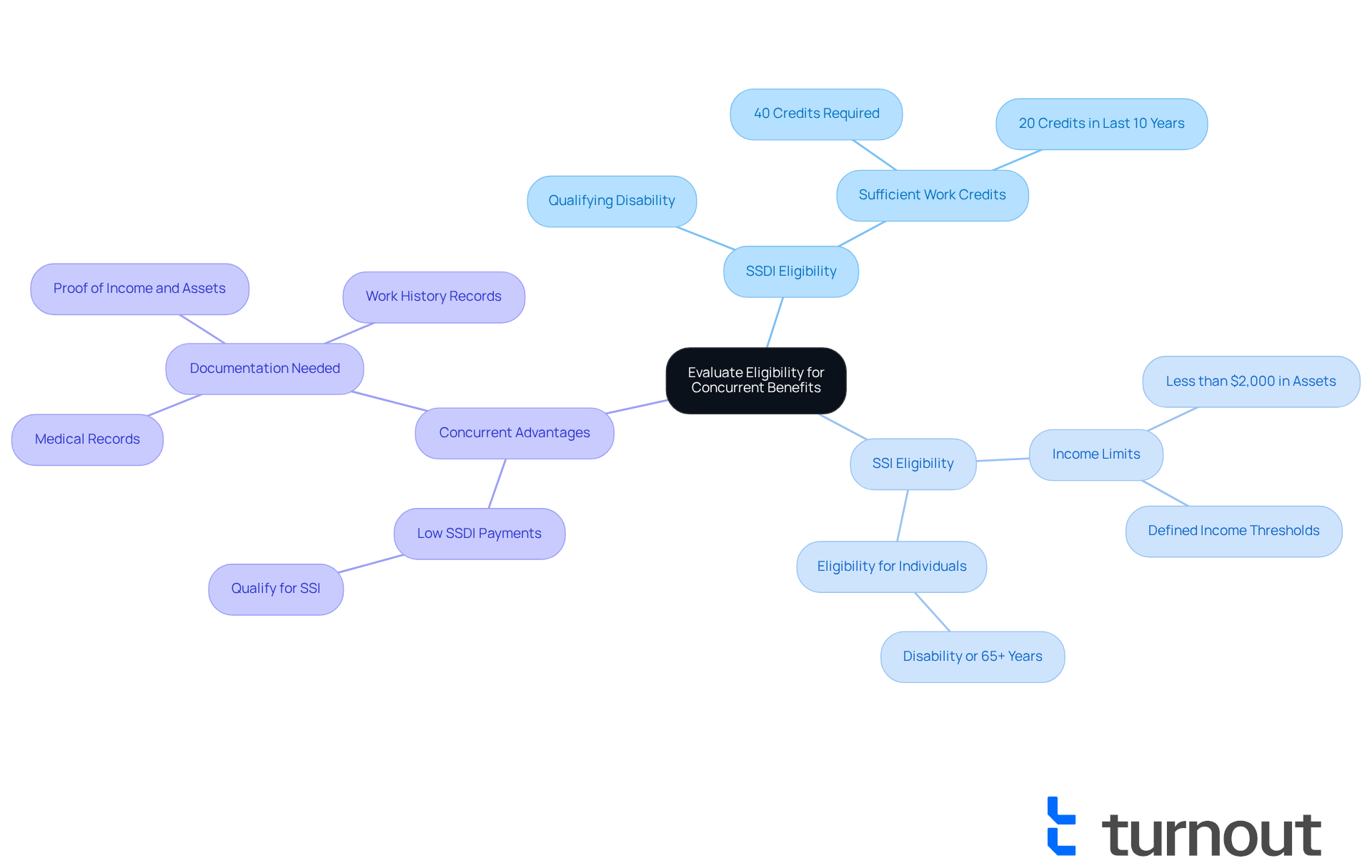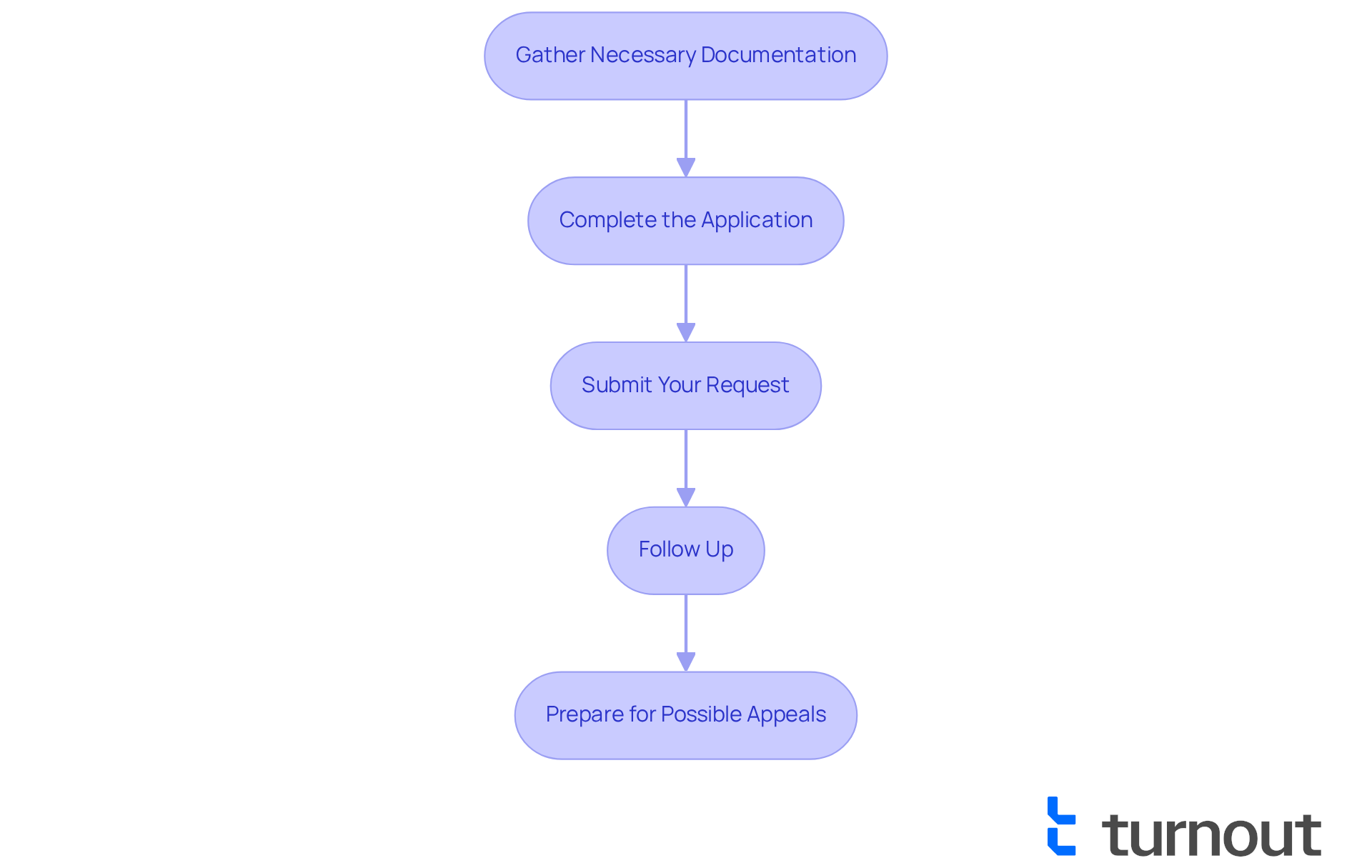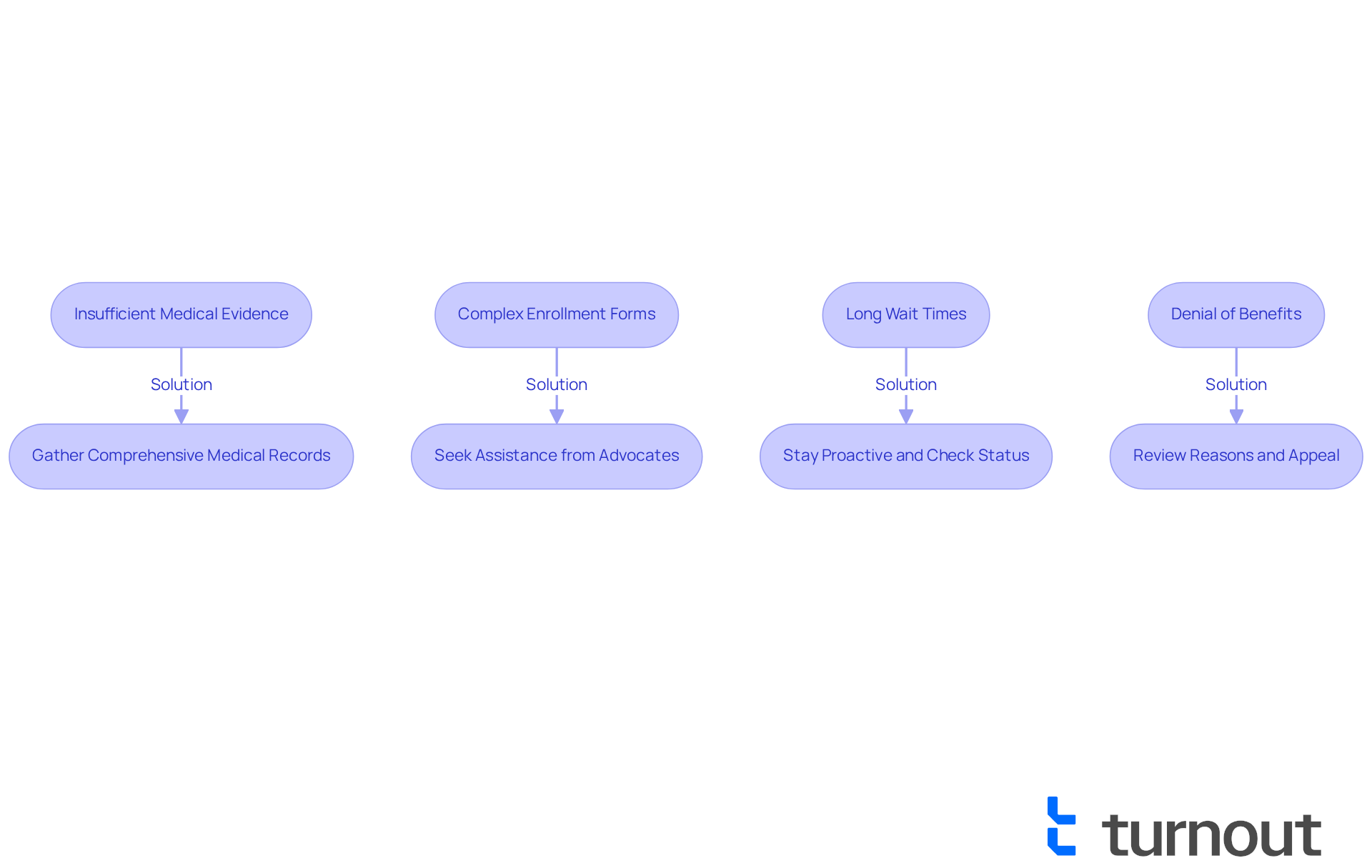Overview
Navigating the world of Social Security and Disability benefits can feel overwhelming, and we understand that many individuals may be unsure about their options. It's important to know that you can receive both Social Security and Disability benefits at the same time, provided you meet certain eligibility criteria.
To help you on this journey, we want to share the requirements for Social Security Disability Insurance (SSDI) and Supplemental Security Income (SSI). Thorough documentation is crucial, as it plays a significant role in the application process. Understanding these requirements can empower you to tackle potential challenges effectively.
Remember, you're not alone in this process. We’re here to help you navigate through it with compassion and care. If you have any questions or need assistance, please reach out. Together, we can ensure that you receive the support you deserve.
Introduction
Navigating the complex landscape of social security and disability benefits can often feel overwhelming. We understand that many individuals face the daunting prospect of concurrent claims. With nearly 70% of initial applications being denied, it’s crucial to grasp the intricacies of these benefits for those in need of financial support.
This guide offers a clear roadmap through the eligibility criteria, application process, and common challenges faced by applicants. Our aim is to empower you to maximize your benefits effectively.
How can you successfully navigate this multifaceted system to secure both social security and disability benefits simultaneously? You are not alone in this journey, and we’re here to help.
Understand Social Security and Disability Benefits
Social welfare payments play a vital role in providing , disabled, or survivors of deceased employees. Understanding these benefits can be a lifeline, especially during challenging times. Let’s explore two primary types of benefits that may be available to you:
- : This program is designed for individuals who have worked and contributed to Social Insurance through taxes but are unable to work due to a disability. Eligibility depends on your work history and the severity of your disability. As we look ahead to 2025, the SSDI program is expected to evolve, with adjustments in eligibility criteria and payment amounts to better reflect economic changes.
- : This need-based program provides financial assistance to individuals with limited income and resources, regardless of their work history. SSI is available for disabled individuals, including children. In 2025, it is anticipated that around 8.7 million individuals will receive SSI assistance, with an income threshold set at $914 monthly for individuals and $1,371 for couples. This slight increase aims to help recipients manage rising living costs.
We understand that grasping these advantages is essential for effectively , particularly when considering, . It’s important to be aware that . Therefore, seeking assistance and carefully navigating the application process can make a significant difference. Remember, you are not alone in this journey; every step of the way.

Evaluate Eligibility for Concurrent Benefits
Evaluating your eligibility for benefits, including the question of can you collect at the same time, can feel overwhelming, but we're here to help. Consider these important criteria:
- SSDI Eligibility: You need a —typically 40 credits, with at least 20 earned in the last 10 years.
- SSI Eligibility: This program has . For 2025, individuals must have less than $2,000 in countable assets (excluding a home) and meet defined income thresholds.
- Concurrent Advantages: If your SSDI payment is low, you may qualify for SSI as well. This often applies to those with limited work history or lower lifetime earnings.
To assess your eligibility, gather the following documentation:
- Medical records detailing your disability
- Proof of income and assets
- Work history records
Having this information will empower you to . Additionally, with the anticipated rise in the , it's vital to stay informed about your entitlements. This adjustment can be crucial for financial support amid rising living expenses. The Social Insurance Administration states, 'The COLA assists in maintaining that payments align with increasing living expenses.'
Furthermore, consider setting up a free 'my Social Insurance' account. This tool allows you to oversee your SSDI and SSI benefits online, helping you verify your status and stay informed about any changes. Remember, you are not alone in this journey. , including , to help you navigate these processes effectively and ensure you receive the support you need.

Navigate the Application Process for Benefits
Navigating the can feel overwhelming, but you are not alone in this journey. To help you through this, we’ve outlined some essential steps to follow:
- : Start by collecting all required documents. This includes your medical records, which detail your disability, your work history, and earnings records. Don’t forget proof of income and assets for SSI eligibility—these are crucial for your application.
- Complete the Application: You can apply for SSDI and SSI online at the (SSA) website, by phone, or in person at your local SSA office. Take your time to fill out the forms accurately and completely. Remember, even small errors can lead to delays or denials, and we want to help you avoid that.
- : Once you’ve finished your application, submit it along with all the supporting documents. It’s a good idea to keep copies of everything you send. This will help you monitor your submission and provide essential information if needed later.
- : After you submit your application, it’s important to . You can easily check online or call the SSA to confirm that your submission is being processed. As of November 2023, applicants faced an average wait time of 225 days for a decision. Staying informed can provide peace of mind during this waiting period.
- : If your , don’t be discouraged. Understand that the appeals process can take time, and be ready to provide additional information or documentation if necessary. It’s common to feel frustrated; statistics show that about three out of five applicants are initially rejected. However, with perseverance and determination, many find success during the appeals process. Remember, we’re here to help you every step of the way.

Address Common Challenges and Solutions
Applying for can be a daunting journey, and we understand that many applicants face significant challenges. Here are some common issues and effective solutions to help you with confidence:
- : Many requests are denied due to inadequate medical documentation. To improve your chances of approval, it's crucial to gather that clearly detail your disability and its impact on your ability to work. Remember, medical evidence is vital, as it significantly influences the approval rates of SSDI requests, which were only around 35% in 2022. Additionally, approximately 70% of initial submissions are rejected, highlighting the necessity of thorough documentation.
- Complex Enrollment Forms: The submission process can feel overwhelming. We encourage you to take your time reading the instructions thoroughly. Consider seeking assistance from knowledgeable advocates, like those provided by Turnout, who can guide you through the process. These understand the forms and collect essential documentation, reducing confusion and simplifying your submission.
- : It's common to experience extensive processing durations, with some individuals waiting over two years for a decision. Staying proactive is key—frequently check your status and respond swiftly to any inquiries for further details from the Social Services Administration (SSA). This diligence can help prevent unnecessary delays.
- : If your application is denied, take a moment to carefully review the reasons behind the decision. You have the right to appeal, and it may be beneficial to gather additional evidence or seek guidance from an advocate to strengthen your case. Many successful applicants have overcome initial denials by enhancing their claims with more robust medical documentation and .
By understanding these challenges and preparing accordingly, you can answer the question: can you at the same time, significantly enhancing your chances of successfully obtaining both benefits. Remember, you're not alone in this journey—we're here to help.

Conclusion
Understanding how to collect both Social Security and Disability benefits can significantly enhance your financial stability during challenging times. This guide has outlined essential steps and considerations to help you navigate the often complex landscape of these benefits. It emphasizes the importance of knowing your eligibility criteria, gathering necessary documentation, and effectively managing the application process.
Key insights include recognizing the differences between Social Security Disability Insurance (SSDI) and Supplemental Security Income (SSI). It's important to understand the eligibility requirements for each program and to prepare for potential challenges that may arise during your application journey. With nearly 70% of initial applications being denied, thorough preparation and awareness of common pitfalls can make a substantial difference in successfully securing the benefits you need.
In light of these insights, we encourage you to take proactive measures:
- Stay informed about changes in eligibility criteria
- Utilize available resources
- Consider seeking help from trained advocates
You are not alone in this journey; these steps can empower you to overcome obstacles and achieve your goals. By understanding the process and preparing adequately, you can navigate the complexities of Social Security and Disability benefits, ensuring you receive the support you deserve.
Frequently Asked Questions
What are the main types of Social Security benefits discussed in the article?
The article discusses two primary types of benefits: Social Insurance Disability Benefits (SSDI) and Supplemental Security Income (SSI).
Who is eligible for Social Insurance Disability Benefits (SSDI)?
SSDI is designed for individuals who have worked and contributed to Social Insurance through taxes but are unable to work due to a disability. Eligibility depends on work history and the severity of the disability.
How is the SSDI program expected to change by 2025?
By 2025, the SSDI program is expected to evolve with adjustments in eligibility criteria and payment amounts to better reflect economic changes.
What is Supplemental Security Income (SSI)?
SSI is a need-based program that provides financial assistance to individuals with limited income and resources, regardless of their work history. It is available for disabled individuals, including children.
What are the anticipated income thresholds for SSI in 2025?
In 2025, the income threshold for SSI is set at $914 monthly for individuals and $1,371 for couples.
How many individuals are expected to receive SSI assistance in 2025?
It is anticipated that around 8.7 million individuals will receive SSI assistance in 2025.
What percentage of initial SSDI and SSI applications are denied?
Nearly 70% of initial SSDI and SSI applications are denied.
What should individuals consider when applying for Social Security and disability benefits?
Individuals should carefully navigate the application process and may seek assistance, as it can significantly impact their chances of approval.




